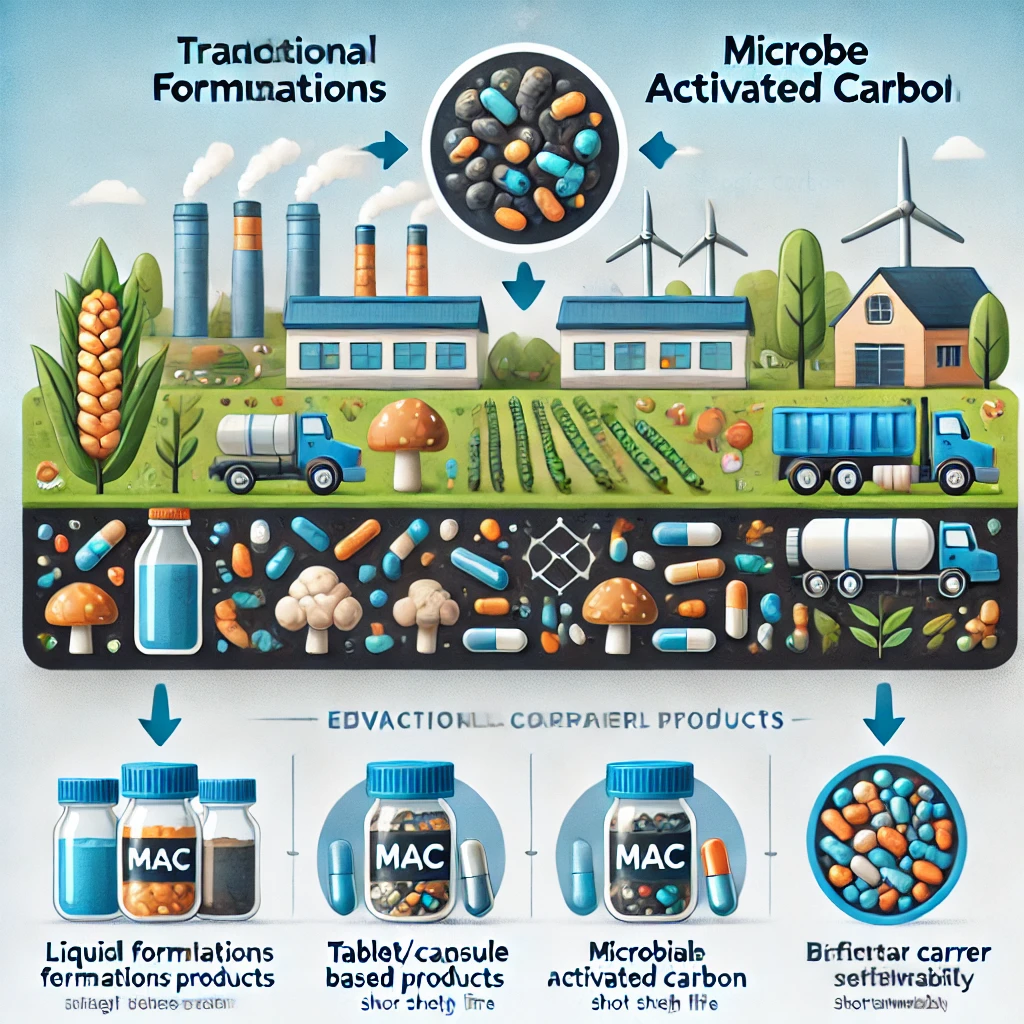
Microbial products, such as bio-fertilizers, bio-pesticides, and microbial consortia, have gained widespread recognition in modern agriculture and environmental management. These products play a crucial role in enhancing soil fertility, improving plant health, and reducing reliance on synthetic chemicals. However, despite their benefits, existing microbial formulations face significant challenges that limit their efficiency and adoption. To fully unlock the potential of microbial solutions, innovation in formulation and delivery mechanisms is necessary. This is where Microbe Activated Carbon (MAC) emerges as a groundbreaking advancement.
Currently, microbial products are available in three primary forms: liquid formulations, tablet/capsule/vial-based products, and granular carrier-based products. Each of these formats presents distinct advantages but also comes with notable limitations.
The limitations of current microbial product formats highlight the urgent need for a more efficient, cost-effective, and sustainable solution. Farmers require a product that combines the benefits of high microbial count, presence of metabolites, compact form factor, and enhanced shelf life while minimizing logistical challenges.
MAC introduces a revolutionary approach by leveraging biogenic carbon with a high surface area as the base medium. This technology offers several key advantages over conventional formulations:
Innovation in microbial products is essential to overcome the challenges faced by farmers and environmental managers. The development of Microbe Activated Carbon (MAC) marks a significant leap forward, offering a highly efficient, cost-effective, and sustainable alternative to existing microbial formulations. As agricultural and environmental sectors continue to evolve, embracing such advancements will be key to unlocking the full potential of microbial technologies.
Stay tuned for our next blog post, where we dive deeper into What is Microbe Activated Carbon (MAC) and How It Works.
There was this interesting discussion I had with Mr Prateek
The teaser of Self Running Soil Revolution for an investment
The effectiveness of any microbial product depends not just on
Mitrasena (Army of friends) is global brand of Biowall Agrihealth Pvt Ltd. Mitrasena products & protocols enables seamless transition to non-toxic farming by concurrently offering Excellent Protection, Higher Productivity & Profit and, Ease of use.
We are a DIPP recognized Startup working for non-toxic crop protection. We are driven by a highly passionate and professionally competent team.
MitraSena © 2025 | All rights reserved | Innovatively Designed and Built by Social Mukul Media
Have any query about bulk orders? Get in touch with us.